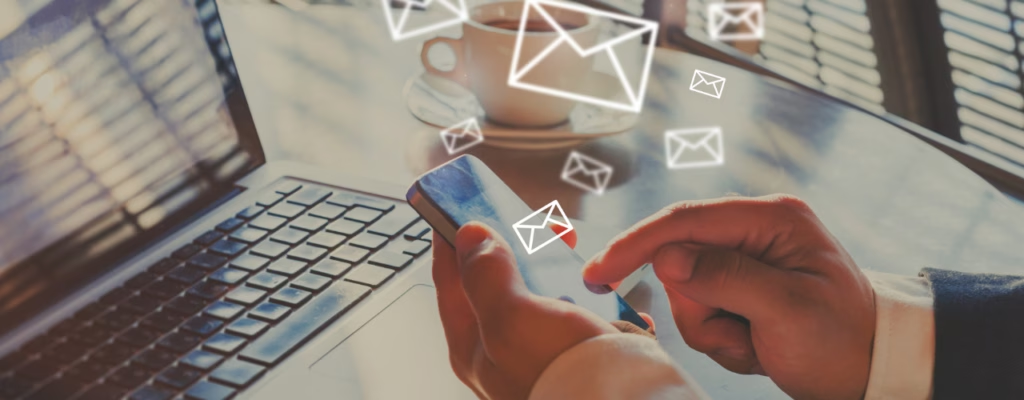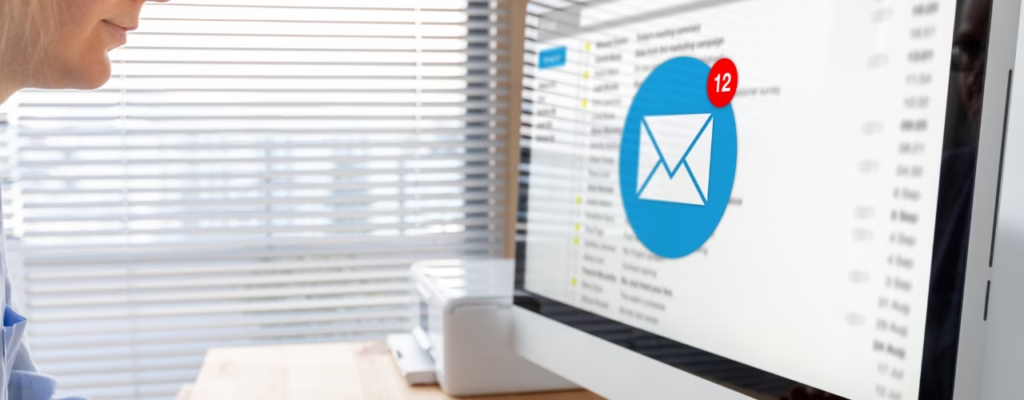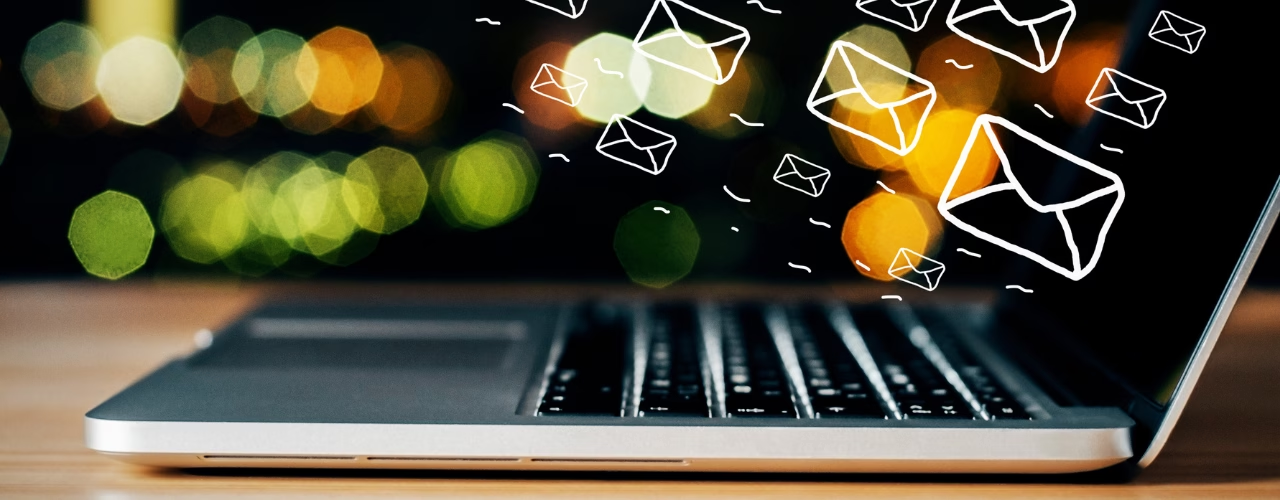How not to sound like a robot (or an overexcited teen)
We’ve all been there—staring at a blank screen, trying to craft the perfect email. You don’t want to sound too stiff (“Dear Sir or Madam, I hope this email finds you well…” yawn), but you also don’t want to be overly casual (“Heyyyy! Just checking in!!!” cringe). So, how do you strike the right balance? How do you email like a pro?
As virtual assistants at Clear Coast Solutions, we handle many inboxes for our clients, ensuring their communication is streamlined and professional. If you’re struggling to stay on top of your email game, it might be time to get a helping hand. Our inbox management services help businesses clear the clutter, prioritise responses, and craft emails that are on-brand and efficient—saving you valuable time.
Here’s your foolproof guide to writing emails that are professional, engaging, and actually get a response.
Nail the subject line
Your subject line is the email’s first impression—make it count. Keep it short, clear, and relevant.
DO:
- “Meeting Request: Tuesday at 3 PM”
- “Follow-up: Quarterly Report Submission”
- “Feedback Request: Website Design Update”
DON’T:
- “Can We Talk?” (Too casual, and what’s it about?)
- “Just a Quick Thing I Wanted to Ask You About If You Have a Sec”
- “Important!” (Too vague)
Get to the point (quickly)
Nobody wants to read an essay. Your recipient should know within the first two sentences why you’re emailing.
DO:
- “Hi Jenny, I’m reaching out to confirm our meeting on Tuesday at 3 PM. Let me know if that works for you!”
- “Dear Peter, I’d like to discuss the next steps for the project we talked about. Are you available this week?”
DON’T:
- “Hey! How’s life? Just wondering when we can chat about that thing I mentioned last week.” (Too informal and vague.)
- “Hello Jane, I hope you’re having a fantastic day! Just wanted to check in and see if maybe you’re available on Tuesday because I was thinking it might be a good time to meet. But of course, if you’re busy, we can look at other options! Let me know your thoughts. Thanks so much!” (Too long, too much fluff.)
Keep it professional (but human)
Sounding like a corporate robot is just as bad as sounding like a hyper teenager. Aim for a friendly and natural tone.
DO:
- “Hi Sarah, Hope you’re doing well! Just a quick follow-up on our discussion—do you have any updates?”
- “Hi Tom, I hope your week’s going well! I wanted to ask if you could review the attached document before Friday.”
DON’T:
- “Yo Sarah! What’s up? Just wanted to check on that thing we talked about last month. Hit me back.” (Way too informal!)
- “Dear Esteemed Colleague, I am writing to follow up on the aforementioned topic discussed in our prior correspondence.” (Relax, you’re not writing a legal contract.)

Mind your manners (but don’t overdo It)
Being polite is great. Begging for attention? Not so much.
DO:
- “Looking forward to your thoughts.”
- “Thanks for your time, and I appreciate your input.”
- “Let me know if you have any questions.”
DON’T:
- “Could you please kindly respond to this email as soon as humanly possible? It’s really important!” (No one wants to feel pressured.)
- “I really hope to hear back from you soon. Please let me know at your earliest convenience. Thank you so much in advance. I truly appreciate it.” (Desperate much?)
Punctuation: get it right to email like a pro
Punctuation is vital to clarity. It can completely change the meaning of your sentence. Avoid confusion and make sure your punctuation is on point.
DO:
- Use periods (.) to end your sentences.
- Use commas (,) to separate clauses, like in “Hi Sue, I hope you’re doing well.”
- Use question marks (?) when asking a question.
- Use exclamation marks sparingly. For example, “Great, I look forward to hearing from you!” (This is fine, but overuse can be overwhelming.)
DON’T:
- Overuse exclamation marks (!!!). This can come across as overly enthusiastic or unprofessional.
- Use excessive commas or leave them out when necessary. “Hi Catherine I hope you’re doing well” is incorrect.
- Leave out punctuation entirely. “Hi Henry hope you’re doing well” makes it harder to read.
Use of Capitals: be consistent
Proper capitalisation is crucial for professionalism. It also helps to emphasise important details without being too aggressive.
DO:
- Capitalise the first letter of each sentence.
- Capitalise names, titles, and proper nouns (e.g., “I’m meeting with Sarah Johnson tomorrow”).
- Use capitals for emphasis where appropriate, like “URGENT” (but avoid all caps in long sentences).
DON’T:
- Use all caps for an entire sentence. “I NEED THE REPORT BY FRIDAY!” (This comes across as shouting.)
- Randomly capitalise words that don’t need it. “I look forward to our meeting with the CEO.” (No need for CEO to be in all caps unless it’s their formal title.)

Slang and abbreviations: keep it professional
Using slang or abbreviations can make you sound too casual or unclear, especially in a professional setting. To email like a pro, it is essential to know when it’s acceptable and when it’s not.
DO:
- Use common abbreviations like “e.g.,” “i.e.,” or “FYI” when necessary and appropriate.
- Use clear language and full sentences to avoid misunderstandings.
- In informal situations (like with close colleagues), you may be able to use “BTW” or “ASAP,” but only if it fits the context.
DON’T:
- Use excessive slang like “LOL,” “OMG,” or “TBH.” These are not appropriate for professional communication.
- Overuse abbreviations, making your message unclear. For example, “Pls find the docs attached FYI” sounds too rushed and unprofessional.
- Use emojis. Unless you’re certain the recipient uses them in professional emails (which is rare), leave them out.
- Use abbreviations your recipient may not understand. For example, “The meeting is scheduled for 14:00 UTC+2, pls RSVP ASAP to FO for further info” could confuse someone unfamiliar with the time zone or abbreviations like “UTC” or “RSVP” or who “FO” might be. Instead, write out the details clearly: “The meeting is scheduled for 2:00 PM (UTC+2). Please confirm your attendance as soon as possible to our Financial Officer Jimmy Harvey, and I’ll send more information.”
Sign off like a pro
Your closing line should match your tone and purpose.
DO:
- Best regards,
- Thanks,
- Looking forward to your reply,
DON’T:
- Cheers mate! (Unless you actually talk like this in real life)
- Yours faithfully (Are you writing to the Queen?)
- XOXO (This isn’t a WhatsApp message to your bestie)
Final check: read before you send
Before you hit send, read your email out loud. If it sounds weird when spoken, it’ll read weird too.
By following these simple tips, your emails will be clear, professional, and (most importantly) get the job done. Now go forth and email like a pro!
Using AI for your emails
In today’s fast-paced world, it’s hard to stay on top of everything—especially emails. Luckily, AI tools can assist with composing well-structured, grammatically correct emails in no time. Whether you’re writing a formal proposal, a quick thank-you note, or a project update, AI can help you get it right on the first try.
However, while AI can be a great assistant for drafting and refining emails, don’t rely on it to replace your voice. Always review and personalise the content to ensure it aligns with your communication style and the recipient’s preferences.
At Clear Coast Solutions, we use AI tools to help with drafting emails quickly and efficiently, allowing us to prioritise more important tasks for our clients—like inbox management. Our services help streamline the process, so you’re only spending time on the emails that truly matter.
By following these simple tips, your emails will be clear, professional, and (most importantly) get the job done. If managing your inbox feels like an overwhelming task, consider reaching out to Clear Coast Solutions for support with inbox management. We can help you stay organised, ensuring that no email gets lost and that you always communicate with confidence.
For more email etiquette tips, consult this article in the Business News Daily.


Leave a Reply